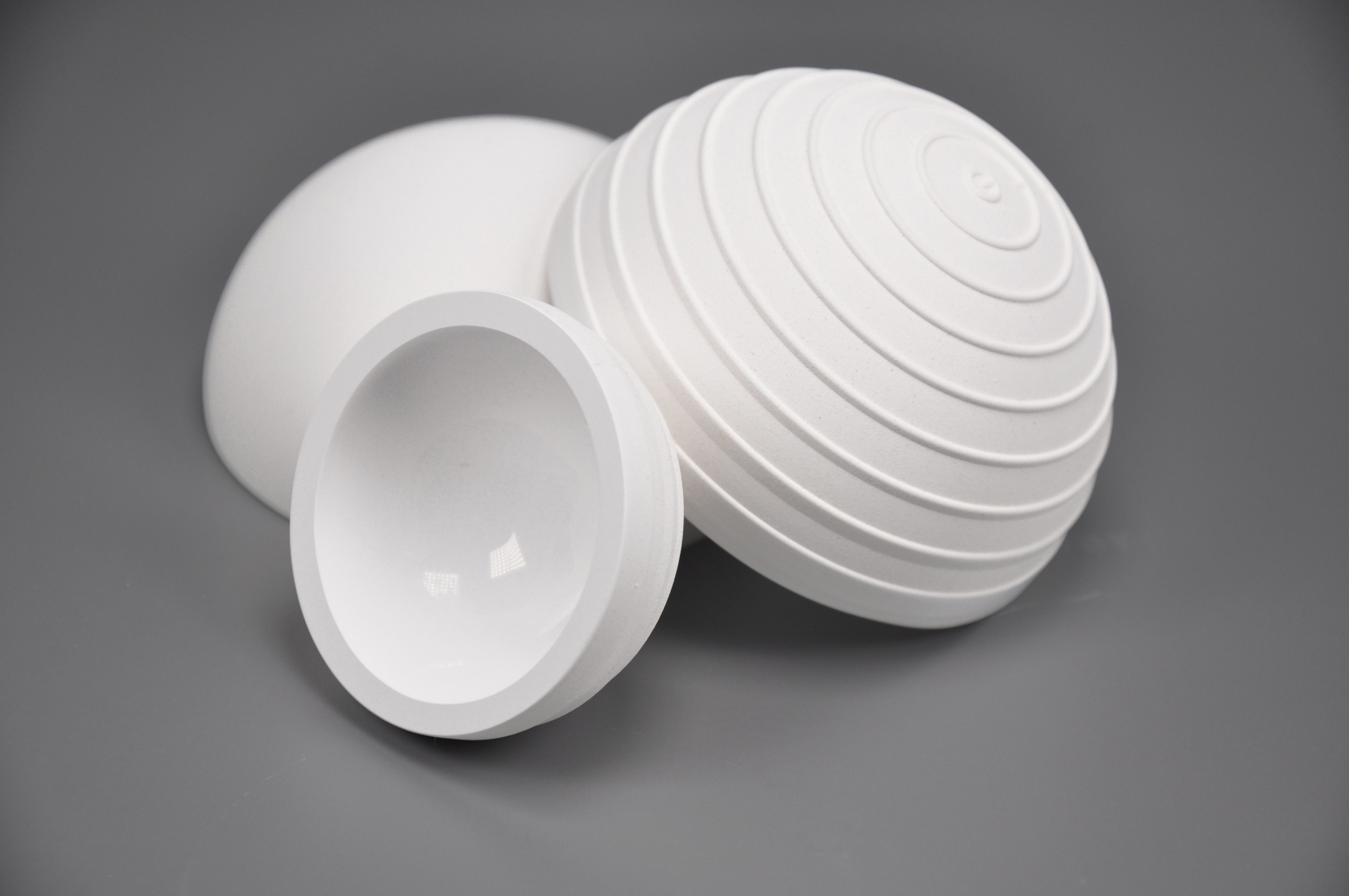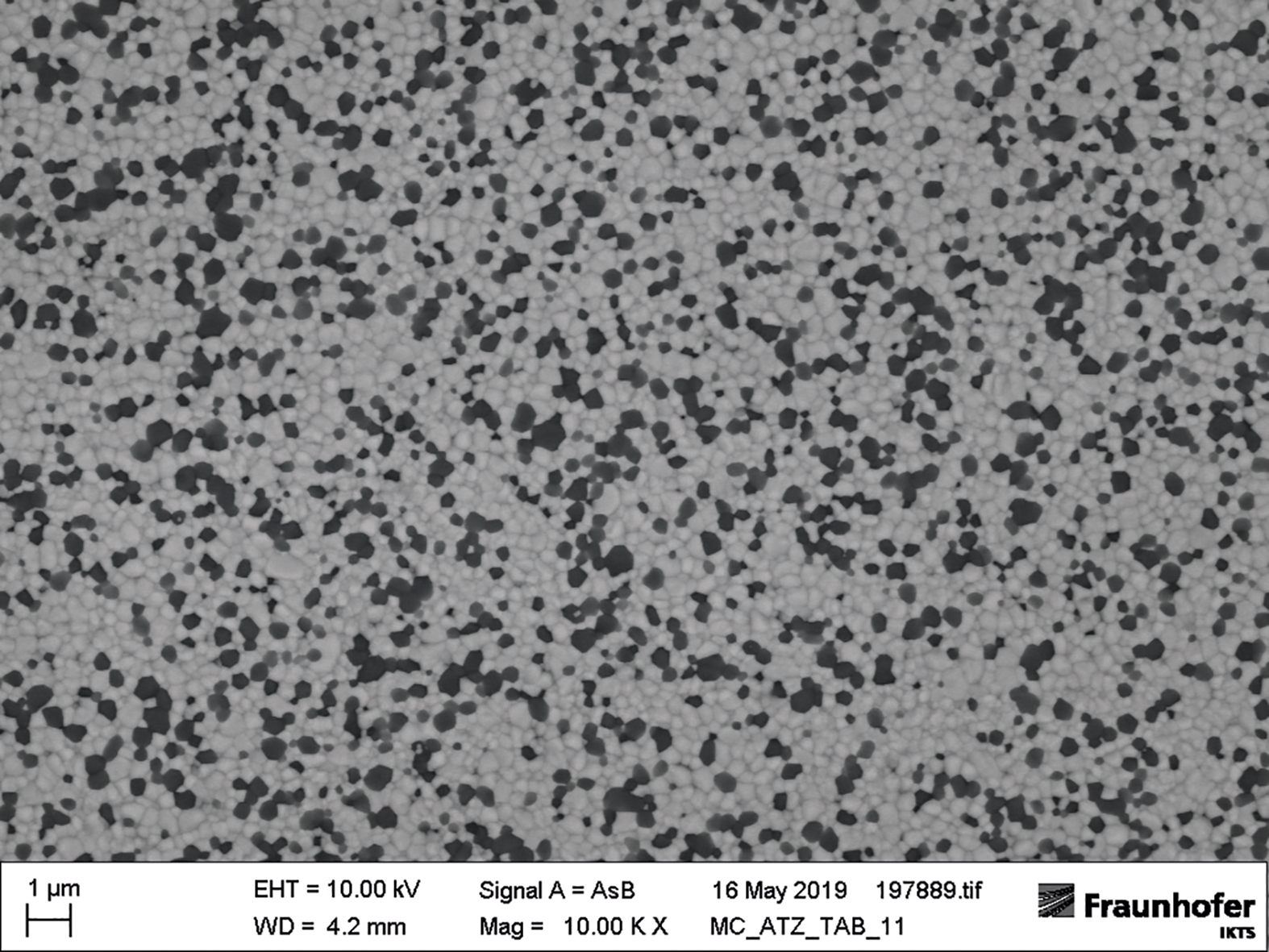Hope for hip joint patients
Fraunhofer develops a ceramic resurfacing prosthesis for the hip joint
The hip resurfacing prosthesis currently used in surgeries is made from an alloy consisting of cobalt, chromium and molybdenum. But this metal is not tolerated well by all patients, some of whom develop allergic reactions or infections. In some cases, the prosthesis may even need to be removed. Through the Ceramic Bonepreserver project, Fraunhofer IKTS has developed a new ceramic resurfacing prosthesis consisting of femoral cap and monobloc acetabulum, which have a higher biocompatibility – and yet are just as stable and strong as their metal counterparts.


Hip joint operations are one of the most common procedures at German hospitals. In fact, according to Germany’s Federal Statistical Office, approximately 220,000 artificial hip joints are implanted each year, generally due to accidents and the wear typically experienced by older people.
An alloy consisting of cobalt, chromium and molybdenum is one of the most common materials used. However, metal abrasion often leads to issues such as the dreaded condition metallosis, with the patient ultimately suffering from irritation, allergic reactions, infections or even pseudotumors. Metal ions can also be detected in blood and tissue. If worst comes to worst, the patient may have to undergo another operation and have the prosthesis removed.
An innovative resurfacing prosthesis based on ceramic is much more biocompatible, as ceramic does not cause any allergic reactions or infections. The prosthesis was developed by the Fraunhofer Institute for Ceramic Technologies and Systems IKTS as part of the Ceramic Bonepreserver joint project, a collaboration with medical devices manufacturer Mathys Orthopädie GmbH.
Bone-preserving reconstruction for better biocompatibility
In addition to high biocompatibility, the metal-free resurfacing prosthesis also offers further benefits. “The ceramic resurfacing prosthesis enables bone-preserving endoprosthetic reconstruction of the hip joint,” explains Project Manager Martina Johannes of Fraunhofer IKTS at the Hermsdorf location.
This innovative resurfacing prosthesis is a combination of femoral cap and monobloc acetabulum. During the surgery, the femoral cap is implanted into the femur, and its counterpart, the acetabulum, anchored in the hip bone. The surfaces that will ultimately be enclosed by bone are structured to improve bone cell adherence. In contrast, the contact area of the artificial joint between the acetabulum and ball element of the femoral cap is completely smooth to enable effortless and seamless movement of the leg.
Production of ATZ ceramic with grain sizes in the nanometer range
Fraunhofer IKTS has many years of experience in the production and processing of ceramic materials, including the forming process used in medical engineering, where requirements in terms of precision and reliability are especially high. Martina Johannes’s team has further optimized the process steps for the Ceramic Bonepreserver project. In the first step, the procured ceramic materials – aluminum oxide and zirconium dioxide – are finely dispersed. Using this as a basis, the researchers create an ultrapure suspension. “The particles need to be evenly distributed in the suspension to ensure the quality of the final product, which needs to be entirely free of any pores, impurities or other defects. Medical implants must be free of any flaws,” says Johannes.
The acetabulum is then formed using the slip casting process, a method that is common in traditional porcelain production and was further developed at Fraunhofer IKTS. The products achieve their final properties during the sintering process, which is the last step. “With sintered alumina-toughened zirconia (ATZ) dispersion ceramic, we achieve a structure featuring a grain size between 310 and 320 nanometers,” says Johannes. By comparison, the very fine coffee grounds used for espresso have a grain size of 250 micrometers, which is around 1000 times larger.
Martina Johannes’s working group is certified in accordance with the EN ISO13485 standard for the production and development of medical engineering materials and components and thus undergoes stringent testing by on a regular basis.
Exceptional strength and long-term stability
What about the strength and stability of the ceramic implants? Fraunhofer researchers have conducted a range of tests to determine just how robust and stable the material is. “Bending, pressure and load tests have revealed that the ceramic prostheses are at least as stable and robust as a product made from metal. The result is resurfacing prostheses that demonstrate longer usability and are well tolerated by people,” says Johannes.
The Ceramic Bonepreserver joint project was completed in September 2020 and supported by the German state of Thüringen with 800,000 euros. The project comes at just the right time: health experts predict that, as life expectancy increases, so, too, will the number of hip joint operations, as a majority of the surgeries are performed on the age group of 70 to 80-year-olds. Ceramic hip joint prostheses go a long way in ensuring that operations and the subsequent healing process are largely free of pain and without complication.